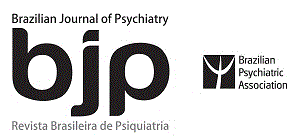N-acetylcysteine (NAC) is a precursor to the amino acid cysteine, a modulator of the glutamatergic system. Thus, NAC may exert a therapeutic effect in several psychiatric disorders, namely schizophrenia and affective disorders,11. Sansone RA, Sansone LA. Getting a knack for NAC: N-Acetyl-Cysteine. Innov Clin Neurosci. 2011;8:10-4. as well as symptoms and syndromes of the obsessive-impulsive spectrum (e.g., trichotillomania and other grooming disorders, pathological gambling, and substance misuse22. Dean O, Giorlando F, Berk M. N-acetylcysteine in psychiatry: current therapeutic evidence and potential mechanisms of action. J Psychiatry Neurosci. 2011;36:78-86.).
There is only one published case report of treatment of skin-picking disorder with NAC.33. Odlaug BL, Grant JE. N-acetyl cysteine in the treatment of grooming disorders. J Clin Psychopharmacol. 2007;27:227-9. No controlled studies or case series of this treatment have been reported. Below, we report three cases treated at our Impulse Control Disorder clinic of patients who, among other disorders, presented with skin picking.
Case 1. A 45-year-old woman was diagnosed with depressive episode, trichotillomania, and skin picking (history of hair-pulling since she was 4 years old). She was started on sertraline up to 100 mg/day, with no improvement in mood or grooming disorder, then switched to venlafaxine 75 mg/day. At that time, she was also given NAC 1,200 mg/day. Her mood and trichotillomania improved partially and the skin picking resolved completely. Following this improvement, she decided to discontinue her medications unilaterally, with subsequent worsening of all symptoms. In December 2011, she was restarted on venlafaxine 75 mg/day and NAC 1,800 mg/day, with improvement of depressive symptoms and trichotillomania and complete recovery from skin picking.
Case 2. A 40-year-old woman complained of excessive buying coupled with irritability, pressured speech, inflated self-esteem, and inadequate behavior. At the time of presentation, she was on haloperidol 2.5 mg/day, biperiden 2 mg/day, imipramine 25 mg/day, and diazepam 10 mg/day. There was no history of alcohol or illicit drug use. All medications were discontinued and she was started on lithium 600 mg/day (up to 1,200 mg/day) and quetiapine 50 mg/day (up to 500 mg/day). One month later, she developed skin picking, despite good mood control. NAC 1,200 mg/day was initiated. Skin picking stopped until 10 months later, when she discontinued NAC by herself. NAC was subsequently reintroduced with great improvement in skin picking.
Case 3. A 31-year-old woman sought treatment for a moderate depressive episode, pathological jealousy, internet addiction, and severe skin picking. She was prescribed sertraline up to 250 mg/day, but did not respond. She was then switched to fluoxetine 20 mg/day and started on NAC 1,200 mg/day, with substantial improvement in skin picking and partial improvement of affective symptoms. Medication had no effect on her pathological jealousy or internet addiction. The patient was later referred elsewhere for psychotherapy.
The patients described in this report experienced major improvement of skin-picking behaviors resistant to other treatments following use of NAC. We also observed that discontinuation of NAC treatment led to worsening of symptoms, with remission of symptoms achieved again after rechallenge with NAC, suggesting a direct relation between NAC therapy and remission of skin-picking behavior. Taking into account that skin picking is a highly prevalent and insufficiently studied condition,44. Schreiber L, Odlaug BL, Grant JE. Impulse control disorders: updated review of clinical characteristics and pharmacological management. Front Psychiatry. 2011;2:1. randomized controlled studies are warranted to ascertain the potential benefits of NAC for patients with this disorder.
References
-
1Sansone RA, Sansone LA. Getting a knack for NAC: N-Acetyl-Cysteine. Innov Clin Neurosci. 2011;8:10-4.
-
2Dean O, Giorlando F, Berk M. N-acetylcysteine in psychiatry: current therapeutic evidence and potential mechanisms of action. J Psychiatry Neurosci. 2011;36:78-86.
-
3Odlaug BL, Grant JE. N-acetyl cysteine in the treatment of grooming disorders. J Clin Psychopharmacol. 2007;27:227-9.
-
4Schreiber L, Odlaug BL, Grant JE. Impulse control disorders: updated review of clinical characteristics and pharmacological management. Front Psychiatry. 2011;2:1.
Publication Dates
-
Publication in this collection
Mar 2014
History
-
Received
2 Feb 2013 -
Accepted
16 May 2013

